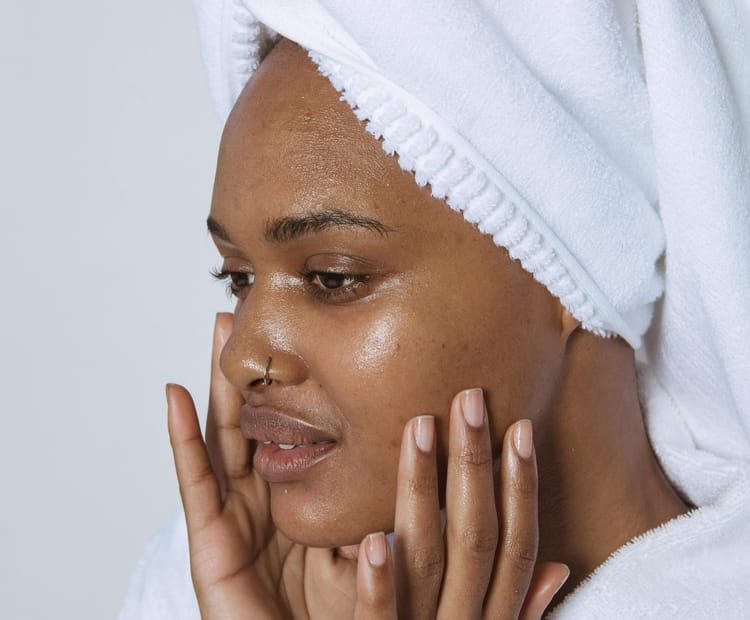Use a Foundation Shade Finder Online to Discover Flawless Skin
Discovering your perfect foundation shade is akin to finding a sartorial soulmate; both require precision, care, and a harmonious blend with your unique characteristics. Now you can achieve this synergy without the guesswork.
Embrace the next evolution in digital cosmetic matching.
As of the current knowledge cutoff in early 2023, innovative technologies in virtual makeup application allow for a tailored approach in selecting a foundation true to your skin tone and type.
Understanding Undertones
Discovering your true foundation match transcends mere surface colour; it delves into the realm of undertones – the subtle hues and pigment that reside beneath the skin's surface. These are generally categorized into three types: cool, warm, or neutral. Cool undertones present hints of pink or blue, warm ones exude peach, yellow or golden nuances, and neutral is a balance of both spectrums. Identifying your unique undertone is the linchpin in selecting a shade that not only matches but enhances your natural complexion, ensuring the foundation unifies seamlessly with your skin.
Identifying Warm, Cool, or Neutral
To discern one's undertones, examine the veins on the underside of your wrists. If they appear bluish or purple, it generally indicates you have cool undertones. Conversely, greenish veins suggest warm undertones, while veins that are not distinctly green or blue denote a neutral undertone.
When in natural daylight, observe how your skin reacts. Cool undertones tend to burn easily in the sun, whereas warm undertones may tan uniformly. Those with neutral undertones experience a balanced reaction, neither burning nor tanning easily – an attribute often associated with an even skin tone.
The natural flush of your cheeks when you’re cold or embarrassed can reveal your hidden undertone.
Understanding your undertone assists in navigating the vast foundation landscape. For cool undertones, look for shades with pink or red bases. Warm undertones should seek yellow or golden-based foundations. Meanwhile, neutral undertones have the versatility to select from shades that lean towards neither extreme. Adhering to this guidance ensures a natural and cohesive complexion presentation.
Undertone Impact on Foundation Choice
Identifying the correct undertone is crucial to selecting a foundation that complements your natural skin tone, hence avoiding the dreaded mask-like effect. Indeed, the undertone is the subtle hue beneath the skin's surface and can profoundly affect the overall appearance of your complexion when using makeup.
It's imperative to understand your skin's undertone to ensure the foundation blends seamlessly. A mismatch in undertone and foundation can lead to an ashy or orangey appearance, detracting from the desired natural look.
Failing to consider the undertone may result in a foundation that clashes with your natural colour palette. This disharmony can emphasize imperfections (such as redness or discoloration) and undermine your cosmetic objectives.
Astute selection based on undertone will not only enhance the skin's natural beauty but also unifies the visage. A well-matched foundation acts as a second skin, faithfully mirroring the natural tone without imposing an artificial finish.
Moreover, an adept choice bearing in mind one's undertone facilitates a broader spectrum of colour accuracy when combining makeup products. This can prevent jarring contrasts when applying contour, blush, or highlight, thus creating an effortless and cohesive aesthetic.
Ultimately, recognition and accommodation of your skin's undertone is paramount in the pursuit of an impeccable foundation match. Excellence in this area is a cornerstone of professional makeup application, ensuring a harmonious and authentic enhancement of individual beauty.
Online Shade Finders
The advent of digital colour matching has revolutionised the foundation selection process, navigating the complexities of undertones with sophisticated algorithms.
In the digital space, interactive tools and applications leverage photographic and contextual data points to curate an array of suitable shades, tailoring recommendations to one's unique skin characteristics.
Advanced "virtual try-on" features further streamline the endeavour, offering a pragmatic preview of the foundation's true-to-life appearance on one's complexion.
Virtual Try-On Technologies
Virtual try-on technologies mark a transformative era in beauty retail, marrying convenience with precision.
- Augmented Reality (AR): Engages AR to superimpose products on live images of the user.
- Facial Recognition: Analyzes key features to match virtual products with facial dimensions.
- Real-Time Shade Simulation: Exhibits the foundation effect during varied lighting conditions.
- Skin Tone Analysis: Utilizes complex algorithms to evaluate the user's skin tone accurately.
- Machine Learning: Enhances the accuracy of recommendations with each interaction.These innovations offer real-time visual feedback, making virtual makeup trials an interactive experience.The integration of these tools aids in the elimination of guesswork, crafting an optimally informed purchase decision.
Utilising Shade Matching Quizzes
Finding an accurate foundation match online is made significantly more achievable through the strategic use of shade selector matching quizzes.
- Identify Your Skin Undertone: Recognise whether your skin has cool, warm, or neutral undertones.
- Assess Your Skin Type: Determine whether your skin is oily, dry, combination, or normal.
- Consider Lighting Conditions: Reflect on the primary lighting in which the foundation will be worn.
- Match Previous Foundation Shades: Compare and calibrate based on shades you have previously used successfully.Each step is crucial to narrowing down the shade spectrum, leading you closer to your ideal match.Effectively leveraging these tools can mitigate the common risk of shade miscues.
By providing detailed personal complexion data, these quizzes propel you towards a more precise foundation selection.
Sampling Made Simple
Embrace the virtual sampling revolution with meticulously designed online tools facilitating a stress-free colour match experience. Instantaneously sift through shades, harnessing augmented reality, to envisage your match with astonishing accuracy. It's the epitome of convenience, translating your makeup ambitions into reality.
Avoid the customary pitfalls of online foundation shopping with our streamlined sample selection process. This ensures your quest for the perfect foundation shade is devoid of complexity and rich in confidence.
Ordering Testers
Securing the correct foundation shade online is invariably influenced by an effective sampling strategy.
- Identify Your Skin Undertone: Determine whether your skin has warm, cool, or neutral undertones to start with the right spectrum.
- Select Multiple Shades: Choose a range of shades that seem close to your skin tone for comparison purposes.
- Consider Lighting Conditions: Acknowledge that lighting can drastically affect the appearance of the foundation, so aim for natural light.
- Order Samples: Procure testers for the shades you've selected to test their compatibility with your skin.
- Perform a Patch Test: Apply each shade to your jawline to observe how well it blends into your skin tone.Sampling is a vital step towards pinpoint accuracy in online purchases.Once received, apply testers under various lighting conditions to discern the most accurate match.
Digital Colour Swatching
Digital colour swatching represents a sophisticated method for ensuring the accuracy of foundation shades prior to purchase. This virtual solution diminishes trial-and-error through precise colour matching technology, saving both time and resources.
Navigating through expansive beauty collections, digital swatching offers a refined visualisation of potential choices. Such tools understand the discrepancy between digital displays and actual skin tones.
In essence, digital swatching algorithms analyse your skin tone through uploaded images, matching them with vast databases of cosmetic hues. It provides a customised preview of foundations against your unique complexion, enriching the selection with a higher probability of an impeccable match.
The implementation of these advanced technologies points to a future where cosmetic selections can be made with confidence, underpinned by digital precision. Customers are no longer constrained to traditional guesswork but equipped with a digital consultant, seamlessly guiding them to an optimal foundation choice. In an increasingly virtual world, these digital aids serve as a beacon, navigating users towards satisfactory, personalised cosmetic acquisitions.
Perfect Match Tips
To ascertain a precise foundation match, consider natural lighting when capturing your skin photograph; this eliminates the chances of misleading tones.
Given that devices' screens can distort colours, utilise a calibrated monitor to ensure the hues depicted are a true reflection of the product offerings. Moreover, to avoid misjudgment due to contrasting screen settings, consult with a colour specialist if necessary.
Remember, skin undertones—be they cool, warm, or neutral—are pivotal in selecting the quintessential foundation match.
Lighting Considerations
Optimal lighting conditions are essential when determining your foundation shade through online platforms. An influx of natural daylight provides the most accurate representation of skin tone, mitigating variances introduced by artificial lighting.
Avoid direct sunlight as it can oversaturate your complexion, leading to a misinterpretation of your skin's true hue.
When assessing your skin tone indoors, position yourself near a window to maximise the use of natural light without direct exposure to the sun. This facilitates a balanced illumination that closely mimics outdoor conditions, providing a reliable canvas for colour matching.
The interplay between light quality and foundation shade selection cannot be overstated. It is crucial to understand that different light sources have varying colour temperatures, which greatly affect the appearance of makeup. For instance, fluorescent lighting often emits a blueish tone that can skew the perception of the foundation colour, while incandescent lighting may introduce a warmer, yellowish cast. Thus, it is imperative to seek out a neutral, balanced lighting environment to ensure a faithful colour assessment when choosing a foundation shade online.
Community Reviews and Swatches
Peer assessments are invaluable, with enthusiasts providing detailed feedback on Foundation shades across various platforms. These reviews often include personal experiences, offering perspective on performance and colour accuracy.
Visual swatches augment textual reviews, showcasing shades on different skin tones. These images can be pivotal in gauging a suitable match.
Spectrum of skin tones represented in swatches offers a comparative framework, guiding online shoppers towards an educated guess in their quest for the perfect foundation match. Community verdicts bridge the gap, connecting subjective experiences to prospective buyers.
Authentic user content, such as video tutorials and real-life wear tests, bring credibility to the claims made by brands. Combining visual evidence from diverse skin tones and textures with communal insights creates a robust reference matrix. Tap into this wellspring of collective wisdom to navigate the online landscape towards a foundation shade that echoes your unique complexion.
How do I know my foundation shade online?
Knowing your foundation shade online can be a challenge, but there are a few steps you can take to ensure you find the right match.
Firstly, start by researching different brands and their shade options. Look for brands that offer a wide range of shades, as this will increase your chances of finding a suitable match.
Next, check if the brand's website has a foundation shade finder tool. These tools often ask you a series of questions about your skin tone, undertones, and any specific concerns you may have. Based on your answers, the tool can recommend the best shade for you.
If a brand doesn't have a shade finder tool, you can try finding swatches or reviews online. Many beauty bloggers and influencers share their experiences and swatches of foundation shades, which can help you gauge how a particular shade may look on your skin.
It's also a good idea to read customer reviews and look for people with similar skin tones who have tried the foundation. Their insights can give you an idea of how the shade performs in real-life situations.



